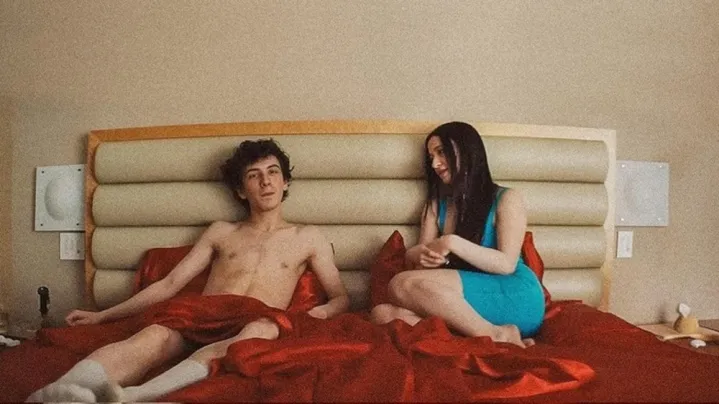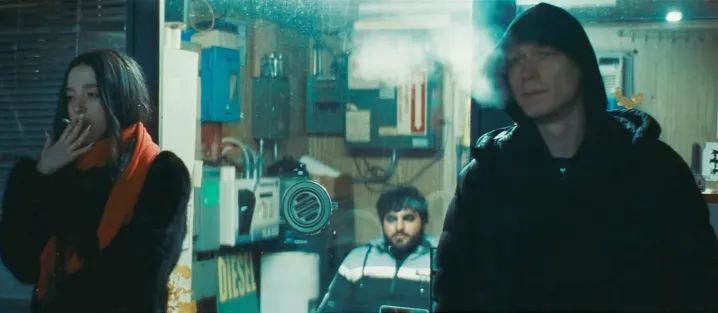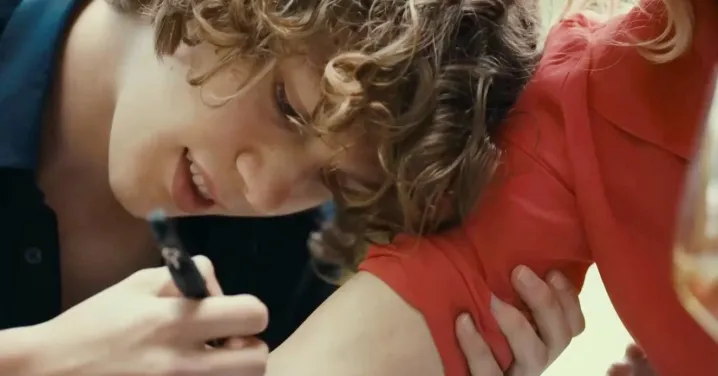You probably haven’t seen 2024’s best movies. Here’s why you need to right now

Let’s not mince words: 2024 was a miserable year for America, for the world, and for humanity at large. No wonder moviegoers retreated in huge numbers to familiar pleasures; even Wicked, the only non-sequel to set the box office on fire these past 12 months, is a form of reheated comfort food. If it wasn’t pure franchise escapism, if it didn’t promise a good time for their hard-earned cash, most people couldn’t be bothered. And so the overlap of movies for so-called cinephiles and movies for the so-called masses seemed to shrink, inching us closer to a future where that Venn diagram is just two circles not touching.
But then there was Anora. Wild, hilarious, shatteringly sad Anora. No perceived binary that splits movie culture into “art” versus “entertainment” could account for Sean Baker’s screwball tragicomedy about a Brighton Beach erotic dancer who falls, against her best judgement, into a whirlwind romance with the playboy son of a Russian oligarch. Anora is a great time, but it’s not escapism. If anything, the movie is about the delusion of escape, and about the desperate reality of an America where everything is transactional. In a year where people treated the movies like a much-needed distraction, Anora looked right at the inequities of the here and now, even as it offered bigger hits of pleasure than any blockbuster.
Rarely does a film with this much joyous energy feel so tethered to the harsh, heartbreaking truth of its times. That’s a bit of a Baker specialty. The writer-director always laces his social conscience through his puckish appreciation for rapscallions and agents of chaos. Most of his movies, like Tangerine and Red Rocket and the sublime The Florida Project, shine an empathetic light on the trials and tribulations of sex workers. But they’re never miserablist slogs or solemn odes to the nobility of the less fortunate. They dare to be scandalously funny. And they refuse to treat their characters like cardboard saints, free of flaws or quirks.
That goes, too, for Ani, the brassy stripper Mikey Madison plays in Anora. One criticism that’s been lobbed at the film is that it doesn’t devote enough attention to the life or the inner life of its heroine. But this is a movie about someone who fiercely protects her true self. Madison, in a revelatory performance that’s been deservedly cleaning up this awards season, keeps peeling back layers of her protagonist: We see the dream sexpot she manufactures for her clients, then the girlish romantic hiding beneath that, then the scared but defiant fighter beneath that, until a wintry denouement where maybe we’re finally — like the man in the car with her — seeing the real Ani. Of course, she’s never just one thing. Neither is the movie.

The structure of Anora is audacious, inspiring a kind of thrilling whiplash. For a while, Baker straps us right into the glamorous rollercoaster ride of Ani’s X-rated Pretty Woman love affair with boisterous man-child Vanya (Mark Eydelshteyn) — a coked-up Cinderella story for adults that passes in a euphoric blur of montage. Then the honeymoon is over, and the movie slows to an almost real-time crawl of misfortune, but it doesn’t lose its irresistibility. Instead, Baker reboots Anora into another of his whirligig stress comedies, introducing a cadre of amusingly put-upon goons that — like our heroine — are all tangled in the economy of one ultra-rich family, including a bored scion on a joy-ride speed run of the American dream.

The movie keeps ingeniously subverting its own apparent trajectory. It seduces us right along with Ani into buying into its fantasy of luxurious escape — and then, after the wheels come spectacularly off that daydream, into falling for the different sort of fantasy Baker appears to be conjuring to replace it. Will the film become a stealth romantic comedy about mismatched gig workers who forge a bond over a day-long scramble across Brooklyn? Will Ani fall for the secretly sensitive henchman, Igor (Yuriy Borisov), who seems to see through her bravado? Any time Anora approaches crowd-pleasing catharsis, it complicates the matter.

And Baker isn’t afraid to court discomfort, to get under the audience’s skin. The film’s inspired centerpiece, when that clown car of henchmen crashes into Vanya and Ani’s love nest (bringing a robust ensemble of comic wringers), walks a tightrope between hilarity and queasy suspense. The laughs catch in your throat. Later, the film lines up a kiss-off a long way coming, handing Ani a juicy assertion of her own financial liberty, a #YasQueen mic drop. The crowd cheers… until Anora instantly brings her (and us) back down to reality. It can’t be so easy.
No movie this year so ecstatically straddled the line separating modern and classical. Baker, for all his quasi-documentary interest in the subcultures of contemporary American hustling, is deeply in touch with the spirit of yesterday’s cinema. His Anora is like the bastard love child of Vittorio De Sica, that Italian master of neorealism, and Preston Sturges, the Hollywood king of screwball. Just, you know, with more lap dances. As in The Florida Project, the fantasy of the Disney princess becomes a shorthand for a better and more comfortable world — a magic kingdom — beyond the reach of Baker’s struggling characters. He speaks to the hardships of the 21st century in the language of 20th-century cinema.

For all the timelessness of its farce, Anora is very much a film for right now. Baker’s social media habits may have quietly called his personal politics into question, but between his latest movie and his last one — the similarly gut-busting Red Rocket, a plainly allegorical study of a charismatic huckster parasite — few filmmakers have offered a shrewder portrait of what we must now continue to identify as the Trump Era. In a year when the rich got richer, funneling their bottomless resources into the campaign of a fat cat promising to make them richer still, Anora expressed deep pangs of commiserative empathy for all those living under the thumb of oligarchs (especially those with Russian money and interests). It’s no exaggeration to say that Baker taps into the same well of despair, rage, and class solidarity that’s driving the public’s love affair with Luigi Mangione.
Over the past few weeks, Anora has become an object of some debate. It has its fervent defenders and its vehement detractors. That’s a healthy, natural response to a brash crowd-pleaser that pokes at the audience’s feelings about class and sex work and the tantalizing allure of upward mobility. Like many great films before it, Anora can weather objections and support alternative interpretations. Yours truly wrote about the ending a few weeks ago, and it’s a testament to the ambiguity of those tender final minutes that an entirely different take — one that centers the painful vulnerability of being perceived — seems just as valid.

Even as it reaches those sobering final minutes, the inevitable hangover at the end of the bender, Anora remains breathlessly alive. It thrives, like so much great moviemaking, on contradictions. It’s a working-girl lament that finds the political in the personal, a fairy tale that implodes before your eyes without losing its sparkle, and a comedy of errors that breaks your heart even as it leaves you gasping for air with its bumbling misadventure. It was a silver lining of slapstick humanism in an often hopeless year — and the best movie this critic saw in 2024. Here are nine more that glowed in the darkness like consolation prizes.
2. Furiosa: A Mad Max Saga

When you’ve made one of the greatest action movies, what can you do for an encore? Returning to the barren outlaw Outback of his Mad Max, George Miller nonetheless declines to repeat himself, fashioning a prequel downright Dickensian in its sprawl and reminiscent of Sergio Leone in its exaggerated vision of frontier vengeance. Any race back down Fury Road was probably doomed to disappoint, but those hung up on the comparative lack of automotive lunacy missed the desert for the derricks. Even with the pedal a little off the metal, Miller left the year’s other blockbusters in his dust with one gobsmacking image after another.
3. All We Imagine As Light

“A European film taking place in India” is how selection committee gatekeepers described Payal Kapadia’s maiden leap from documentary to narrative filmmaking — a thin rationale for keeping such a soulfully observed drama of intergenerational friendship out of the Oscar race for International Feature. Still, there is nothing inherently regional about the joy and loneliness Kapadia ambivalently finds in Mumbai via the story of three women of different ages navigating it. If you’ve braved the hustle and bustle of any city, you might catch your own reflection in the film’s glances out apartment windows and into the blur of passing trains. This writer caught glimmers, too, of the sensual visions of Wong Kar-wai and Claire Denis, which is about the highest compliment he could hope to muster.
4. Challengers

No, the tennis boys don’t hook up. Luca Guadagnino is after a more complicated ménage à trois with his tale of two aspiring champs (Mike Faist and Josh O’Connor) and the fellow rising sports star (Zendaya) who comes between them — and then, just maybe, finds a way to bring them back together again. On and off the court, Guadagnino’s staging is electrifying, making visual spectacle out of the back-and-forth volley of felt and feelings. And he’s working from the most witty, playful, intricate piece of screenwriting this year — a game of serves and returns from Justin Kuritzkes that unfolds over multiple years and arenas of competition. Challengers is such heady adult fun, in the rich tradition of something like Bull Durham, that you can scarcely believe it came out of modern Hollywood.
5. I Saw the TV Glow

Having already made one of the most perceptive movies about the terminally online, writer-director Jane Schoenbrun rewinds back to a time before everyone was. Their haunting sophomore feature is elder millennial cinema par excellence, dropping us into a late-’90s ghost suburbia of lonely teens connecting not by modem but via their shared devotion to a supernatural soap. Schoenbrun conceived I Saw the TV Glow as a cautionary tale for a trans audience, warning of the agony of keeping your true self locked away like an old box of VHS recordings. But in the particular is contained the universal: Anybody who’s laundered their sense of self through a pop-culture obsession — like the WB and Nickelodeon programming Schoenbrun so eerily evokes — could relate to the film’s spooky melancholia.
6. Last Summer

Sex is comedy, the French director Catherine Breillat once asserted through the title of an early provocation. It’s also a way to establish and explore power — a subject broached by the filmmaker’s latest drama, in which a bourgeois lawyer (Léa Drucker) slips almost thoughtlessly into a taboo fling with her husband’s teenage son (Samuel Kircher). Breillat plays with both the conventions of stock MILF fantasies and a general discomfort with the same; those who found Challengers too tame probably won’t have the same objections to its frank age-gap carnality. But the real psychological fireworks arrive in the second half, when Last Summer becomes a brittle portrait of self-preservation, and a lesson in the way that sex can be a preview of the real mind-f*cks of the adult world.
7. Rebel Ridge

Political cinema as crackerjack mainstream entertainment, just like Anora. Aaron Pierre, who can now be heard (but not seen) in Disney’s Mufasa, delivers what should have been a star-making turn in Rebel Ridge, as a cucumber-cool military trainer who finds himself squaring off against a small-town sheriff and the common (and infuriatingly legal) practice of civil asset forfeiture. Though director Jeremy Saulnier made a name with grisly, high-octane thrillers like Green Room, he keeps his latest suspenseful marvel on the edge of violence. Those hoping to see corrupt cops gruesomely get what’s coming to them missed the point of an action movie that’s all about the restraint police so frequently decline to exercise.
8. Red Rooms

There’s not much violence in Red Rooms either — not much that we actually see, that is. Though Pascal Plante’s supremely disturbing psychodrama concerns a vicious serial killer who brutally rapes, tortures, and dismembers teenage girls, we catch only a couple, brief glimpses of his obscene handiwork. We do however hear the killing, and that sonic window becomes a kind of darkly tantalizing tease, daring to provoke an uncomfortable connection between the viewer and the main character, a Montreal fashion model (Juliette Gariépy, creepier than Hannibal Lecter by a mile) whose fixation on the crimes and their perpetrator spills into the darkest corners of the dark web. While the film turns on the mystery of her motives, her car-crash fascination becomes a dark mirror, subtly indicting the audience of everything from Rotten.com to true crime to, oh, Terrifier 3.
9. The Substance

Coralie Fargeat knows that to really dissect the appalling superficiality of Hollywood, you’re going to need a sledgehammer, not a scalpel. The French director’s nightmare satire The Substance is every bit as broad and grotesque as the industry it’s critiquing, which means it should appeal to showbiz lifers and gorehounds alike. The only thing more heightened than the literally eye-popping practical effects (a callback to the gloriously goopy heyday of Screaming Mad George) is Fargeat’s contempt for a world where it’s survival of the chemically and surgically fittest. Amid the torrential downpour of blood, pus, and body parts, we get a few oddly poignant grace notes, most courtesy of Demi Moore’s fearlessly ferocious performance as a sex symbol fighting detaching tooth and nail to outlive the expiration date set by a town with very unforgiving and very unrealistic beauty standards.
10. Christmas Eve in Miller’s Point

Thanks to Hallmark, Lifetime, and Netflix, Christmas movies now arrive by the dozen or more each year. But it’s rare to encounter one that captures the full spectrum of emotion — and especially the vague, free-floating melancholy — the holiday season can provoke. Tyler Thomas Taormina (Ham on Rye) comes close with his latest indie drama, which drops viewers into the annual holiday gathering of an extended family in a suburban stretch of New York. Christmas Eve in Miller’s Point simply observes, with a Santa-like diligence, the rituals, routines, and dynamics of this clan, without ever feeling the need to impose a larger narrative framework on the night in question. That said, tensions — a hallmark of any real Christmas with the relatives — do ripple across the surface of its lovely yuletide tapestry.
For more of A.A. Dowd’s writing, visit his Authory page.
Source link





